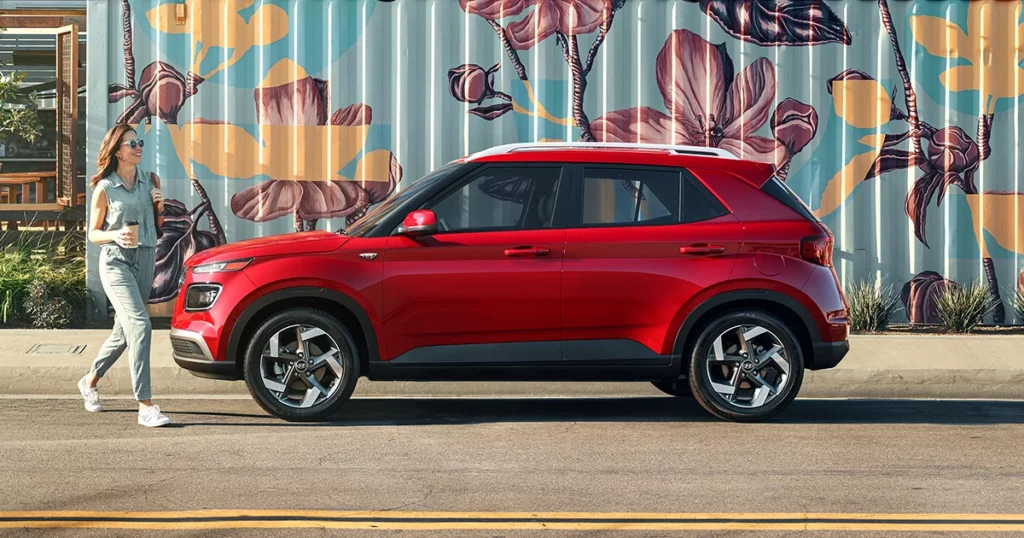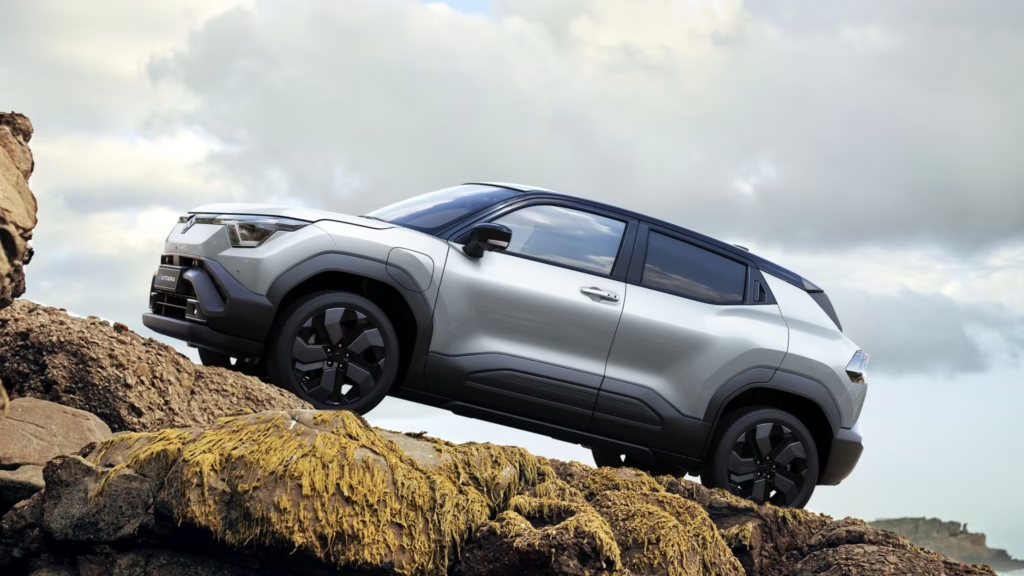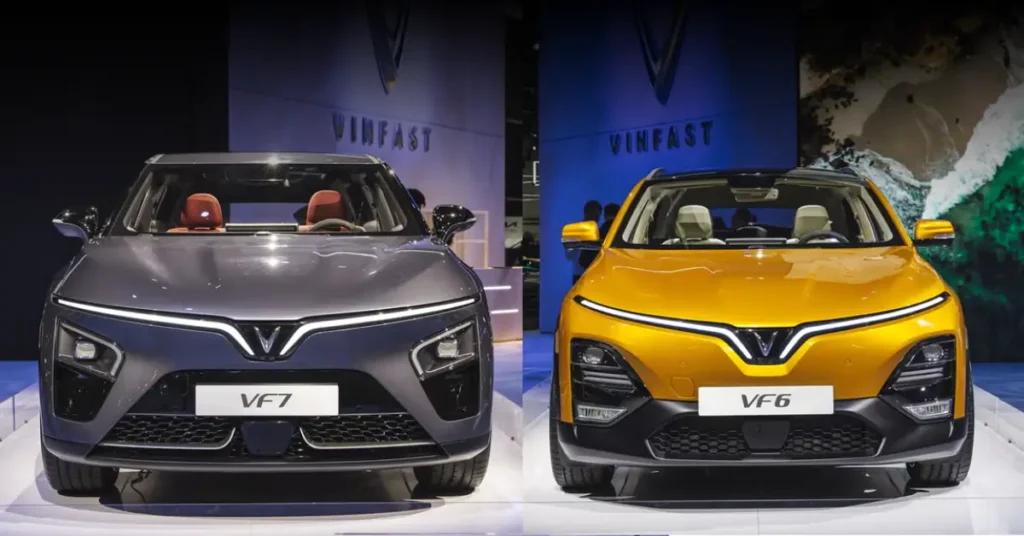Top 5 Upcoming Cars in India: Next 3 Months (June–August 2025)
Hey, car lovers! Buckle up because India’s auto scene is about to get electrifying. Over the next three months—June to August 2025—five game-changing cars are hitting the roads, from zippy SUVs to cutting-edge EVs. Whether you’re cruising Mumbai’s Marine Drive or tackling NH44, these rides promise style, tech, and thrills.
This blog dives into the top 5 upcoming cars in India, inspired by Motorkin’s latest buzz. Expect details on specs, prices (~₹15–55 lakh), features like panoramic sunroofs, and tips for buyers in Delhi, Bengaluru, and beyond. We’ll also cover what to watch out for before you book. Ready to find your dream ride? Let’s roll!
1. Hyundai Venue: A Bold New Avatar
The Hyundai Venue has been a hit with Indian buyers, and its all-new generation (not a facelift) is set to launch by July 2025, priced at ~₹8–14 lakh. This compact SUV is getting a complete makeover, ready to take on the Maruti Brezza and Tata Nexon.


What’s New?
The 2025 Venue is bigger, sharper, and tech-loaded. Its sleek design, with a wider grille and slimmer LED headlights, will turn heads in Chennai’s T-Nagar. Inside, expect a plush cabin with a 12-inch touchscreen, digital instrument cluster, 360° camera, and ventilated seats—features that rival pricier SUVs like the Hyundai Creta. Add wireless Android Auto/Apple CarPlay, an electronic parking brake, and a panoramic sunroof, and it’s a game-changer for young buyers in Pune.
Performance and Options
- Engines: Petrol (1.2L, 83 hp), turbo-petrol (1.0L, 120 hp), and diesel (1.5L, 100 hp) options continue, with smooth 6-speed manual or 7-speed DCT gearboxes.
- Fuel Economy: ~15–18 km/l, saving ~₹30,000/year on fuel vs. rivals (~12 km/l, ₹100/liter).
- Future-Proof: CNG variants may arrive later, but no EV clarity yet. Hyundai’s eyeing an electric Venue by 2027.
Why It’s Exciting
The Venue’s tech upgrade tackles its outdated features, making it a top pick for city commuters in Kolkata or first-time buyers in Ahmedabad. Its compact size (4 meters) navigates tight Delhi lanes, while ADAS (Level 2, with lane-keep assist) ensures safety on highways like NH48. Priced competitively, it’s a value-packed SUV that’ll boost Hyundai’s 20% subcompact SUV market share.
Pro Tip: Book early for the mid-spec Asta trim (~₹10 lakh) to get ventilated seats and ADAS at a sweet price.
2. Tata Harrier EV: Electric Powerhouse
Tata Motors is charging up with the Tata Harrier EV, launching by June 5, 2025, at ~₹24–30 lakh. Unveiled at Auto Expo, this electric SUV builds on Tata’s five-year EV expertise to rival the Mahindra XUV.e8 and Hyundai Creta EV.


What’s Special?
The Harrier EV isn’t just a diesel Harrier with batteries—it’s a tech marvel. Expect a 500–600 km real-world range, perfect for Mumbai-Goa road trips without range anxiety. Its all-wheel-drive (AWD) system, a first for Harrier, grips twisty roads like Ooty’s hills, unlike the FWD Creta EV. The design is futuristic, with a closed grille, LED light bar, and 19-inch aero wheels, grabbing attention in Bengaluru’s Koramangala.
Features Galore
- Tech: Dual 12.3-inch screens (touchscreen + cluster), 360° camera, panoramic sunroof, ventilated seats, Level 2+ ADAS (adaptive cruise, auto braking).
- Interior: Premium vegan leather, ambient lighting, wireless charging, matching Tata’s Curvv EV vibe.
- Charging: Fast charging (~30 min for 80%), ideal for Delhi’s growing charger network.
Why It Stands Out
Tata’s EV dominance (Nexon EV, Punch EV) shines here, offering Mahindra-like innovation with better range. The AWD and tech make it a premium choice for enthusiasts in Hyderabad or families in Chandigarh. Priced at ~₹24–30 lakh, it undercuts the MG ZS EV (~₹35 lakh) while offering more space (450-liter boot) and power. Tata’s 500+ service centers ensure easy maintenance, unlike newer EV brands.
Pro Tip: Wait for test drives to check AWD on wet monsoon roads, and use Tata’s app to locate chargers.
3. Maruti e-Vitara: India’s EV Game-Changer
Maruti Suzuki is jumping into EVs with the Maruti e-Vitara, launching by July–August 2025 at ~₹15–22 lakh. This compact electric SUV, spotted testing as the WagonR EV, will compete with the Tata Curvv EV and Hyundai Creta EV.


Why It’s a Big Deal
The e-Vitara blends Maruti’s DNA—low running costs and reliability—with EV perks. Expect a 400–500 km range, costing ~₹2/km vs. ₹6/km for petrol SUVs, saving ~₹50,000/year for Delhi commuters. Its design, with sharp LED headlights and a sleek profile, fits right in at Gurgaon’s Cyber Hub. The cabin offers a 10-inch touchscreen, wireless Android Auto, ADAS, and a sunroof, matching rivals like the Creta EV.
Charging Revolution
Maruti’s killer move is its charging network plan:
- Metro Cities: Chargers every 10–15 km by 2026, starting with Delhi, Mumbai, Bengaluru.
- Expansion: 100 cities by 2027, 1,000 by 2030, rivaling India’s 50,000+ petrol pumps.
- Impact: Eases range anxiety for road trips to Jaipur or Lonavala.
Why Get Excited?
Maruti’s 3,000+ service centers ensure hassle-free ownership, unlike MG or BYD’s smaller networks. Priced at ~₹15–22 lakh, it’s cheaper than the Tata Curvv EV (~₹20–25 lakh) and offers similar features (400 km range, fast charging). It’s perfect for eco-conscious buyers in Chennai or budget-focused families in Lucknow, with running costs as low as a Maruti Alto.
Pro Tip: Check Maruti’s charging app for real-time charger availability before booking.
4. VinFast VF6/VF7: Vietnam’s Bold Entry
VinFast, a Vietnamese automaker, is storming India with the VF6 and VF7 EVs, launching by early July 2025 at ~₹15–25 lakh. Assembled in Tamil Nadu, these compact SUVs aim to disrupt the Tata Curvv EV and Hyundai Creta markets.

What’s Cooking?
The VF6 is a Creta-sized SUV (4.2 meters) with a boxy, rugged look, while the VF7 sports a curvier, Curvv-like design. Both promise 350–450 km range, fast charging (~30 min for 80%), and tech like 10-inch touchscreens, 360° cameras, ADAS, and panoramic sunroofs. VinFast is teasing “extraordinary” features—possibly AI voice assistants or over-the-air updates—to stand out in Mumbai’s crowded SUV scene. Interiors will feature vegan leather and ambient lighting, appealing to young buyers in Kochi.
Why It Matters
VinFast’s Tamil Nadu plant ensures competitive pricing by avoiding high import duties, unlike MG’s ZS EV. At ~₹15–25 lakh, the VF6/VF7 undercuts the BYD Atto 3 (~₹30 lakh) while offering similar EV perks. Their global experience (US, Europe) brings polished tech, and local assembly creates jobs, boosting appeal in Chennai. For first-time EV buyers in Bhopal or adventurers in Goa, these SUVs offer fresh style and low running costs (~₹2/km).
Pro Tip: Follow VinFast India’s X account for launch offers, and test-drive both models to pick your vibe.
5. Volkswagen T-Cross: Premium SUV with a Twist
Volkswagen is bringing the T-Cross to India by August 2025, locally assembled at ~₹45–55 lakh. This midsize SUV, replacing the imported Tiguan, will rival the Skoda Kodiaq and Toyota Fortuner with 5- and 7-seater options.


What to Expect
The T-Cross blends Tiguan’s sleek design with Kodiaq-like features: Matrix LED headlights, 12-inch touchscreen, digital cluster, panoramic sunroof, ventilated seats, and Level 2 ADAS. Its 4.4-meter length fits Pune’s suburbs, with a 400-liter boot (5-seater) or 300 liters (7-seater with third row up). Engines include a 2.0L turbo-petrol (190 hp) and 2.0L diesel (150 hp), paired with a 7-speed DSG, offering ~12–15 km/l. AWD options may arrive later, per X buzz.
Why It’s Hot
Local assembly in Chakan keeps costs down vs. the CBU Tiguan (~₹60 lakh), making it a premium yet accessible choice for Delhi’s elite or Ahmedabad’s families. The 5-seater suits young couples, while the 7-seater fits joint families, unlike the 5-seater-only Jeep Meridian. VW’s 200+ service centers ensure easy upkeep, and its German build quality promises durability on NH27. At ~₹45–55 lakh, it’s a luxury SUV for less than a BMW X3 (~₹80 lakh).
Pro Tip: Opt for the 5-seater for more boot space if you don’t need extra seats, and check VW’s financing deals.
What to Consider Before Buying
These cars are exciting, but here’s what to watch out for:
- Hyundai Venue: Base trims may skip ADAS or sunroofs, so check mid-spec variants (~₹10 lakh) for value. Ground clearance (~190 mm) is decent but struggles on rural Bihar roads.
- Tata Harrier EV: High price (~₹24–30 lakh) and untested AWD tech need real-world validation. Charging infrastructure outside metros like Patna may lag.
- Maruti e-Vitara: Features match rivals (Curvv, Creta EV), so Maruti’s edge is its charging network and service. Range (~400 km) may not suit long Himachal trips.
- VinFast VF6/VF7: New brand means limited service centers (mostly Tamil Nadu, metros). Wait for reviews to confirm quality vs. Tata or Hyundai EVs.
- Volkswagen T-Cross: Premium pricing (~₹45–55 lakh) competes with SUVs like MG Gloster, which offer more space. Firm ride may jar on Mumbai’s potholes.
General Tips:
- Test-drive on local roads (e.g., Bengaluru’s Outer Ring Road) to check comfort.
- Compare running costs: EVs (~₹2/km) vs. petrol/diesel (~₹6–8/km).
- Check resale value—Maruti, Hyundai lead; VinFast is unproven.
- Book early for launch discounts, especially for Venue and e-Vitara.
Bonus: What About the Toyota Fortuner?
Fans in the transcript asked about the Toyota Fortuner’s update. The mild-hybrid diesel upgrade (2.8L, 204 hp) was expected in 2024 but hasn’t been confirmed for 2025. The next-gen Fortuner, likely with a 2.4L hybrid and bolder design, is slated for Thailand first (possibly 2026), then India (~2027). For now, no Fortuner launch is planned in June–August 2025, so stick with the current model (~₹35–50 lakh) or explore the T-Cross for a premium alternative.
Verdict: India’s Auto Scene Is Heating Up
The next three months—June to August 2025—will redefine India’s car market with the Hyundai Venue, Tata Harrier EV, Maruti e-Vitara, VinFast VF6/VF7, and Volkswagen T-Cross. Priced from ~₹8 lakh to ₹55 lakh, these cars offer panoramic sunroofs, 360° cameras, and EV ranges up to 600 km, catering to commuters in Kolkata, families in Gurgaon, and enthusiasts in Pune. Maintenance (~₹10,000–₹80,000/year) and new brands like VinFast need caution, but the tech and value are unbeatable.
Which car’s your pick? Drop a comment, join car forums on Reddit, and check our 2025 Hyundai Creta Review for more buzz. Book a test drive and hit the road in style!
Sources
- Motorkin YouTube Transcript, provided
- Hyundai Venue 2025: New-Gen Launch Details, Autocar India, https://www.autocarindia.com
- Tata Harrier EV Unveiled at Auto Expo, CarWale, https://www.carwale.com
- Maruti e-Vitara: India’s First Maruti EV, ZigWheels, https://www.zigwheels.com
- VinFast VF6, VF7 India Launch, Team-BHP, https://www.team-bhp.com
- Volkswagen T-Cross India Plans, MotorBeam, https://www.motorbeam.com
- Upcoming SUVs in India 2025, @autocarindiamag, https://t.co/XyZ9pJiKl4
- Tata Harrier EV Range and Features, @Zigwheels, https://t.co/Wp3rTVD2bR
- IndianOil Fuel Prices, https://www.iocl.com
- Policybazaar Insurance Costs, https://www.policybazaar.com

